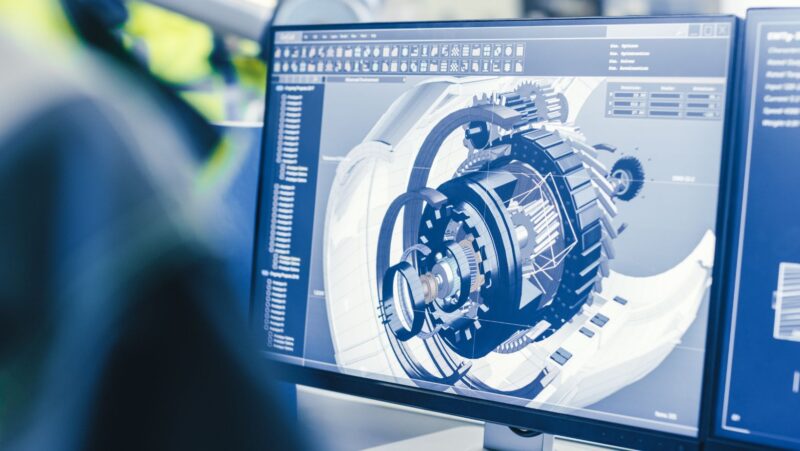
Lifting heavy loads isn’t just about strength-it’s about using the right tools. That’s why rigging hardware is so important. Shackles, slings, and hooks help make lifting and hoisting safer and easier. If you work in construction, shipping, or any job that involves lifting, knowing how each tool works can help you avoid accidents and get the job done right.
The right equipment also saves time and keeps your team safe. Even if you’re just starting out, learning about rigging hardware is a smart step. Keep reading to see how each type of rigging hardware helps with lifting tasks.
Shackles: The Backbone of Your Rigging Setup
Shackles are one of the most dependable and commonly used pieces of rigging hardware. Their strong U-shaped frame is designed to connect slings, chains, or ropes to a load or anchor point. Available in different types like screw-pin and bolt-type, each version is suited for specific lifting or securing tasks.
A shackle’s strength depends on its size, shape, and material. Many are built from alloy steel, giving them the power to handle heavy loads safely. Some screw-pin shackles, for example, are rated for several thousand pounds, making them ideal for demanding lifts.
Using the right shackle keeps loads secure during lifting. It’s important to check load ratings and inspect for wear or damage before every use. Proper use of rigging hardware like shackles not only keeps workers safe but also ensures the job gets done right.
Hooks: Quick Connections for Secure Lifting
Hooks are key pieces of rigging hardware used to connect loads to lifting equipment. Their curved design helps grip the load securely, reducing the chance of slipping during lifts. Hooks are used in many industries because they are quick to attach and easy to handle.
There are several types of hooks, each built for a specific purpose. Latch hooks have a locking latch that keeps the load from slipping off accidentally. Swivel hooks rotate to prevent twisting, while eye hooks offer a fixed, strong connection point.
Using the right hook for the job improves both safety and performance. Latch hooks are great for moving heavy or unstable loads because they add extra security. Using the proper hook enhances safety, speed, and control during lifting.
Slings: A Versatile Option for Load Handling
Slings are important pieces of rigging hardware used to lift and move loads safely. They are flexible and can handle many types of lifting tasks, making them useful in construction, shipping, and industrial settings. Slings are made from different materials like nylon, polyester, or wire rope, depending on the job.
There are several types of slings, each designed for specific uses. Round slings are soft and flexible, making them perfect for lifting in tight or awkward spaces. Flat slings are stronger and better suited for lifting heavier or bulkier items.
Choosing the right sling depends on the shape, weight, and condition of the load. Wire rope slings are great for rough environments and can handle extreme weight and wear. With the right sling, lifting becomes safer, faster, and more efficient.
Eyebolt: The Anchor Point
Eyebolts are strong and useful tools in lifting jobs. They have a round loop on top where slings or hooks can be safely attached. Some eyebolts stay in place, while others can be removed depending on the job.
It’s important to install eyebolts the right way. If they are not secured properly, the load can slip or fall. A well-made eyebolt can hold thousands of pounds when used correctly.
Always check eyebolts for cracks, rust, or damage before using them. Damaged eyebolts can break during lifting. Properly used and checked, eyebolts ensure safe lifting jobs.
Chain Hoists: Mechanically Assisted Lifting
Chain hoists are essential tools for efficiently lifting and lowering heavy loads. They use a strong chain, gears, and a ratchet to make lifting easier and safer. This setup lets workers move heavy items without using too much force.
In construction and other jobs, chain hoists are used to lift materials to high places. They make it possible to move heavy loads where manual lifting would be hard or unsafe. This speeds up the job and reduces risk.
Using chain hoists also saves time and effort. One person can lift what might usually need several people. Proper care makes chain hoists a safe part of any rigging system.
Winches: Controlled Lifting and Pulling
Winches are strong tools used to pull or lift heavy loads. They use a spool and cable system to give extra pulling power. This makes it easier to move heavy objects with less effort.
Winches can be manual, electric, or hydraulic. Manual winches work by hand and are good for lighter jobs. Electric and hydraulic winches are used for bigger, heavier tasks.
Many industries use winches, like logging, construction, and material handling. They facilitate safe and swift movement of equipment and supplies. To keep winches working well, they should be checked and maintained regularly.
Load Cells: Measuring Weight Accurately
Load cells are important devices used in lifting systems to measure the weight of a load. These sensors give real-time data, helping workers keep track of the load while lifting or moving it. With this information, operators can make safer choices during lifting tasks.
Accurate weight readings from load cells help prevent overloading. Lifting more than the safe limit can damage equipment or cause accidents. By using load cells, industries can avoid these risks and follow safety rules more easily.
Many fields like shipping, construction, and manufacturing rely on load cells for safe handling. To keep them working right, load cells must be checked and calibrated often. This keeps their readings accurate and ensures safe and smooth lifting operations.
Make Every Lift Safer and Smarter
Mastering the basics of rigging hardware is more than just knowing the names of the tools-it’s about using them the right way, every time. Shackles, hooks, slings, and other gear aren’t just parts of the job-they’re the backbone of safe, efficient lifting. When you understand what each one does and how to use it properly, you lower risks and boost performance.
Don’t cut corners with safety. Stick with trusted equipment, check it often, and stay sharp. For more helpful tips and deeper insights, check out the rest of our blog.








